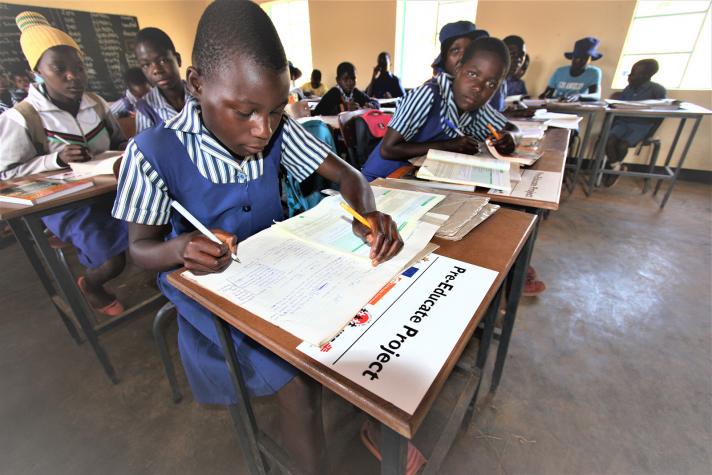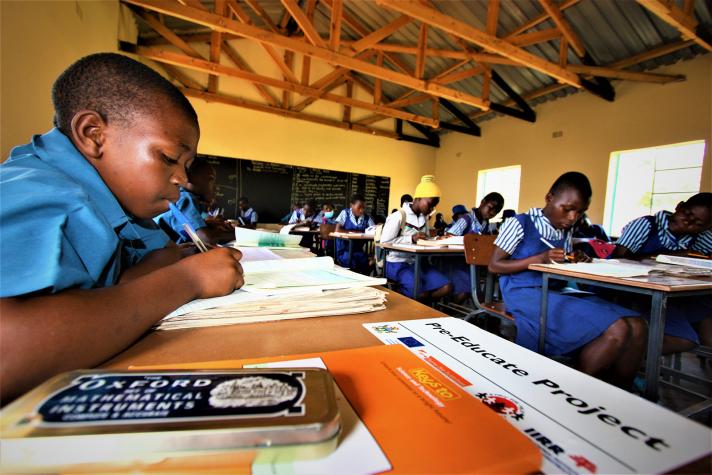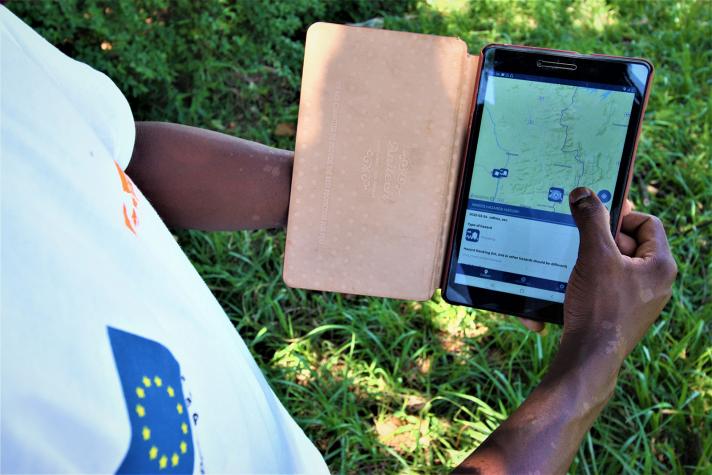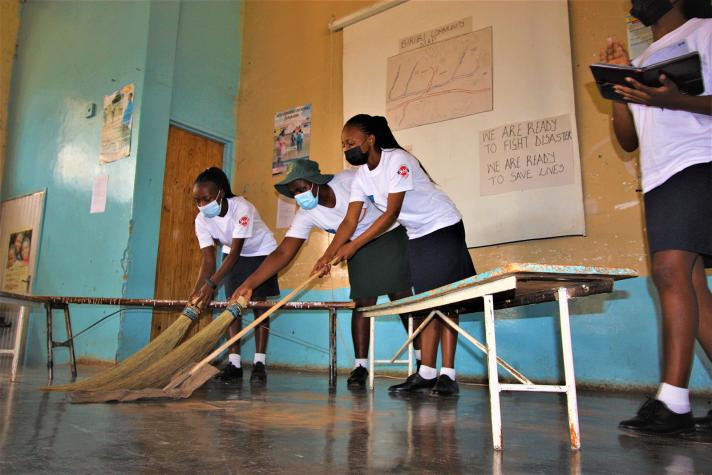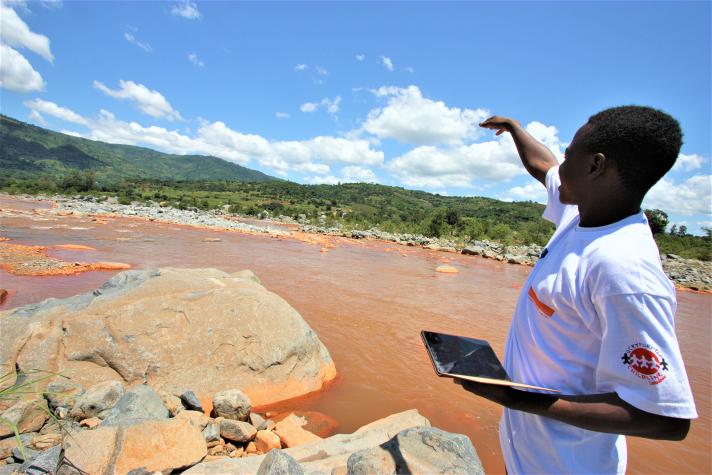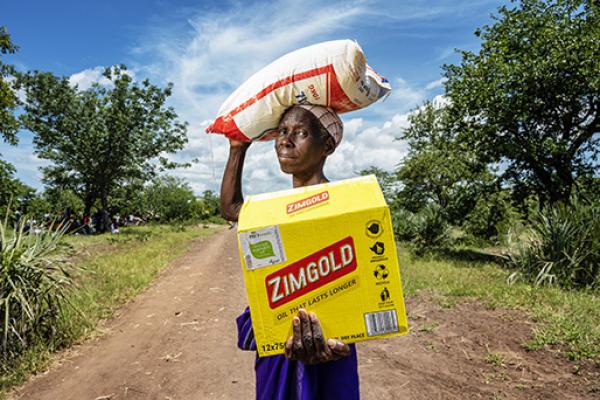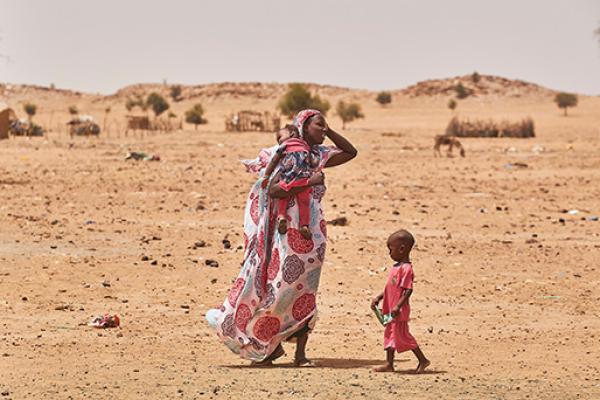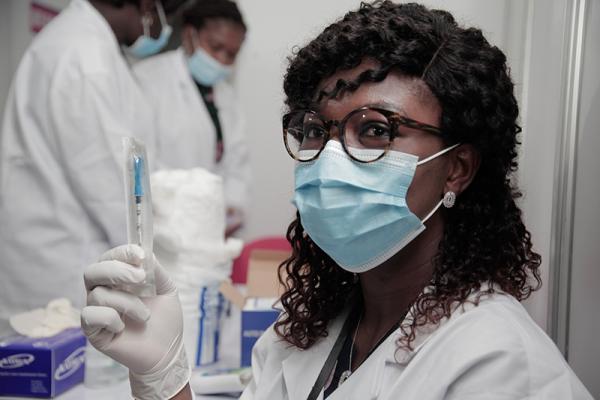“We are climate activists!” “We are ready to fight disasters! We are ready to save lives!”
The shouts echo throughout the hall at Biriiri high school in Chimanimani district, Manicaland, eastern Zimbabwe.
It is the rallying call of the school’s disaster risk reduction (DRR) club, funded by EU humanitarian aid. Here, the children’s action has a huge impact on tackling climate change and preparing for future disasters.
With about 40 members drawn from all grades, the club’s sole purpose is to learn about climate change, the potential natural hazards they face, and how to prepare for them.
The students raise awareness first among club members, then among the rest of the school and then with the community around them.
The idea of forming DRR clubs in high schools was born after Cyclone Idai hit Zimbabwe in 2019, killing 340 people and destroying homes, schools, infrastructure, and farmland.
The districts of Chimanimani and Chipinge in the east were the hardest hit. “The memory of what happened during cyclone Idai is still fresh in our minds,” says Emmanuel Ziyomo, the DRR club president.
“We had never seen anything like that before. There was flooding, landslides, rivers broke their banks, and at a neighbouring school, 2 students died when huge boulders rolled into the room they were sleeping in. We do not want to be caught off guard again. We want to be prepared in case another cyclone hits us”
Learning to support the community
As part of club activities, the students do safety drills, including fire and evacuation drills.
They also plant trees and visit local markets, talking to people about climate change and how to respond in the event of a disaster caused by a natural hazard. The students also use drama and public speaking to talk about climate change.
“What we’re learning is not only important for us and the school but also for the community around us and our families at home” says DRR club member Britta Munyoro.
The DRR club at Birriiri high school is part of an EU-funded programme run by Terres Des Hommes Italy (TDH) in Zimbabwe, which aims at strengthening the capacity of teachers and students in disaster preparedness.
As part of the same programme, there are DRR clubs in some 40 schools in the Chimanimani and Chipinge districts.
Over the last few years, Zimbabwe has faced concurrent natural disasters including cyclones, recurring droughts, flooding, and socio-economic hardships, compounded by COVID-19.
“We want to minimise education and schooling disruption due to humanitarian crises,” says Charles Muzite, the Programme manager for TDH Italy-Zimbabwe.
“Chipinge and Chimanimani districts are vulnerable and suffered extensively when cyclone Idai hit. In 20 of the 40 schools we’re working in, we have set up a manual weather station. We have also provided the students with tablets where they record daily weather conditions”.
In the event of heavy rains, or flooding, or rising water levels, the students record this, take pictures and feed the information into a national database, Charles explains.
“This helps disaster management authorities and early warning systems, at the local and national level, to create or deploy mitigation measures promptly, in good time. This is important to show the students that their efforts count in the bigger picture of tackling climate change.”
“Our work with TDH in Zimbabwe is crucial in helping vulnerable communities in disaster-prone districts recover,” says Sylvie Montembault, the EU’s Humanitarian Aid expert for Zimbabwe.
“The project is also equipping communities, starting with students, so they are better prepared. The students in the DRR clubs function as agents of change in their schools and communities. These students are the future and now is the time to empower them to better protect their environment against climatic shocks,” Sylvie explains.
EU humanitarian action in the country
In addition to disaster preparedness, the EU also provides humanitarian food assistance to vulnerable communities, whose resilience has weakened over the years due to prolonged and interrelated disasters, which have left them with little time to recover.
“A lot of the disasters happening now are new or uncommon,” says Jacqueline Mudzengerere, another member of the Biriiri DRR club. “So, our parents do not have the knowledge that we have now about climate change. But we are the future, we must act, and we must act now if we are to be prepared to face climate disasters.”
Since 2021, the EU has allocated more than €14 million in humanitarian assistance to Zimbabwe, including €4 million for disaster risk reduction and disaster preparedness to address recurrent climatic shocks.
Additionally, over €2 million have been allocated to support the national COVID-19 vaccination campaign and ensure access to vaccination for the most vulnerable in Zimbabwe.
Story by Bertha Wangari, EU Civil Protection and Humanitarian Aid Operations.
Publication date: 29/06/2022


